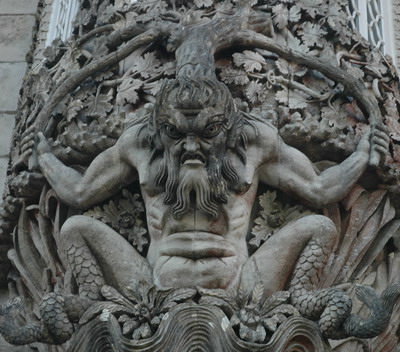
Sintra and Lisbon
Portugal
| |
| HOME |
| About Tenaya |
| About Us |
| Latest Update |
| Logs from Current Year |
| Logs from Previous Years |
| Katie's View |
| Route Map |
| Links |
| Contact Us |
![]()
SINTRA
The Lonely Planet guidebook says Sintra "is Sleeping Beauty meets Lord of the Rings, a hilly, mountainous Never-Never land. It's exceptional microclimate encourages exotic vegetation, flowering and climbing around icing-sugar palaces crowned by gargoyles." Spot on. It is a delightful, colorful little town set on a lush mountainside. Complete with a palace built by the Moors, the historic center is listed as a Unesco World Heritage site because of "its unique and influential marriage between landscape and architecture." The british poet, Lord Byron called it the "Garden of Eden." We had a pleasant day exploring this wonderful town. After lunch in an outdoor restaurant overlooking the castle we were able to taste the two delicious local "cakes" that had been recommended.
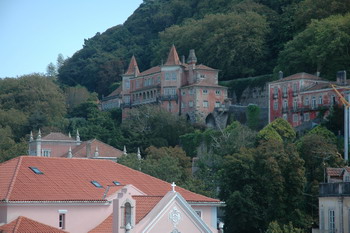
Some examples of the European Romantic architecture. Sintra was one of the first centers featuring this building style.
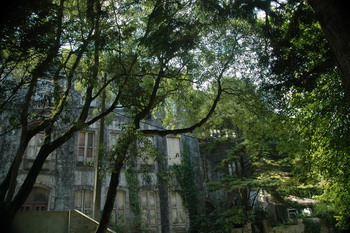
Sintra is lush with foliage.
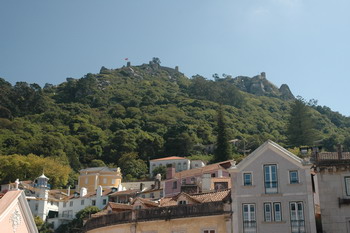
The Moorish Castle with its huge walled area as seen from the old town area. The park and Palace of Pena are just beyond it and out of sight.
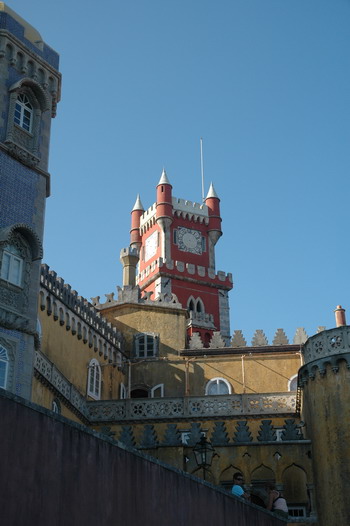
Some views of the Palace of Pena that sits high on the mountain above Sintra.
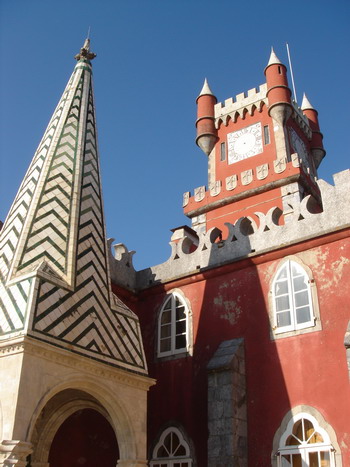
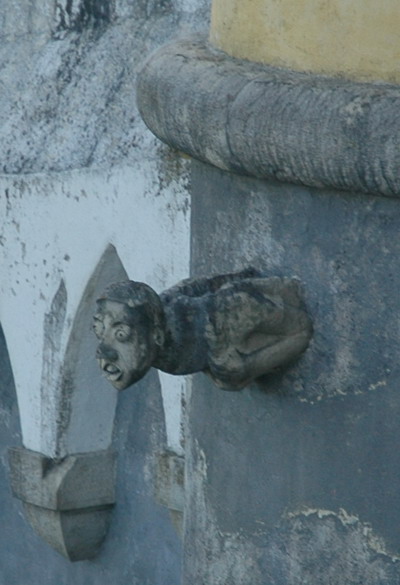
A gargoyle shaped like a man protruding from the Palace of Pena.
LISBON
Lisbon is an interesting city where we wished we could have spent more time. We took the train from Cascais which only took about 40 minutes. In our short time we narrowed our visits to the areas recommended in our guide books. Baxia, the lower town by the waterfront is a vibrant area filled with locals, immigrants and tourists. Wide cobbled streets named after trades form the hub on which many vendors hawk their wares in front of traditional storefronts and restaurants. Like Porto, there are many immigrants from Portugal's colonies in Africa and beyond. It was refreshing to have the cultural mix. Next we took Tram 28E (one of several tourist oriented trams) around the historical area. Up and down steep, narrow streets we traveled in a charming old tram. It was an easy way to see the hilly area of Alfama.
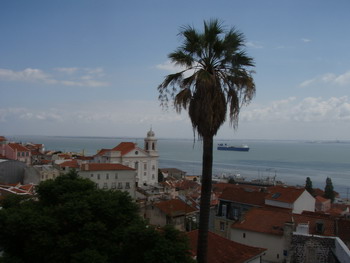
A view from Largo das Portas do Sol of Alfama and the river below.

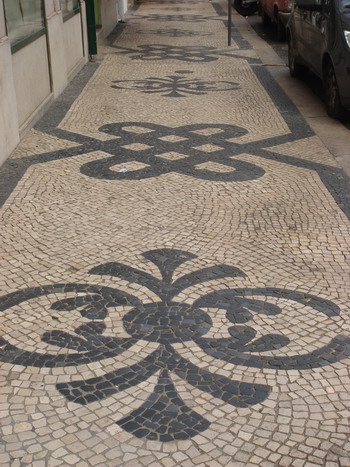
There are such wonderful patterns in the cobbled sidewalks and plazas.
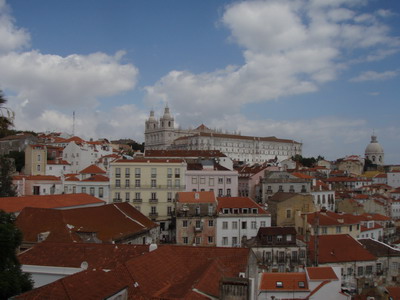
Looking up at the streets of Alfama and the cathedral.
Lisbon is one of the most interesting cities in Europe. It is one of the oldest, being established as the capital by the Romans in 60 BC. After the Romans had ruled Portugal for 600 years the next invaders were the Moors, North African Muslims, who arrived in 711. In the 11th century the "Reconquita" (Christian reconquest) began in the north and in 1297 the boundaries of the Portuguese kingdom - much the same as they are today - were formalized.
In the 15th century Portugal began to look beyond - beginning extraordinary explorations across the seas. These explorations transformed the small kingdom into a great imperial power. Many of the problems that Portugal faced in the 18th, 19th and 20th centuries came from the success of these explorations and the incredible wealth that flowed into Portugal from Brazil and Africa. With this income from the outside it was not necessary to improve the agricultural methods nor to develop industry as the other European countries did. During that period a number of government ruled the country (just from 1910 - 1926 there were 45 governments!), and in 1932 control was taken by Antonio de Olivera Salazar who ruled as a dictator until 1968.
It took exactly 10 hours to sail the 53 miles from Cascais to Sines (pronounced seen-ech) Portuguese pronunciation is nearly impossible for me to figure out! Well, we didn't sail the whole day. As usual the wind was light in the morning and picked up in the afternoon with some false hopes about mid-day. A little after 1300 we were sailing along and a few dolphins came over to us. Then more arrived. Soon we had them swimming and arching on both sides of Tenaya.
Again the marina staff and customs official were quite pleasant. This is a very nice marina with excellent facilities. Although I was tired from the long day and being in the sun I just had to have a shower in the best showers we've seen to date. The next morning we left for Lagos.
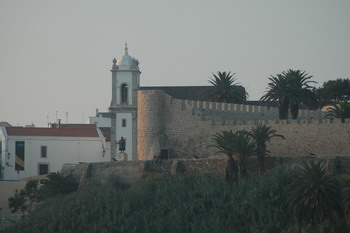
We didn't walk around the town but shot this photo of a church with a statue of Vasco da Gamma in front from Tenaya in the marina. Sines is his hometown.

Looking up a pretty street from in front of the information center.
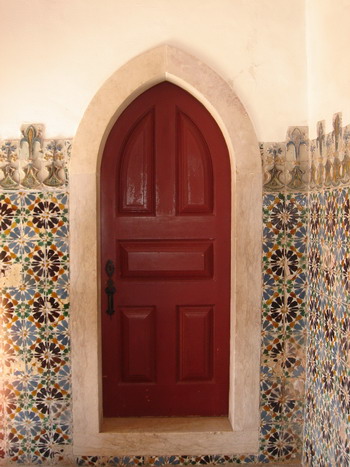
a doorway in the Sintra National Palace, in the heart of the old town, surrounded by tile work. The castle was lined in beautiful tile.
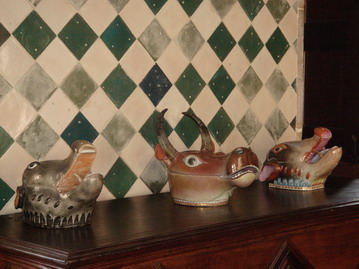
Some interesting pots in the Palace.
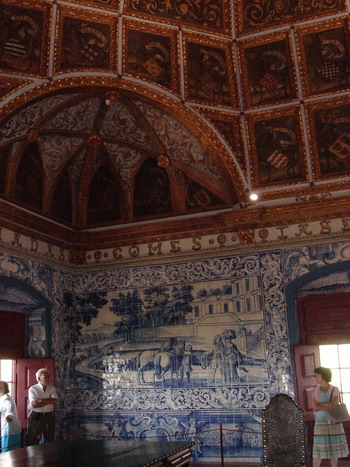
The Coat of Arms room in the Sintra National Palace.
Over-the-top is the only way I could describe the Coat of Arms Room. Manuel I had it built in the beginning of the 16th century. At the peak of the 8 sided vaulted ceiling is the Portuguese coat of arms and a winged dragon surrounded by his children's names. Below are the coat of arms from 72 Portuguese families of nobility. It is said that fleets setting out for or returning from Africa, Brazil or India could be seen from this room which has a westerly view over the Atlantic. During a different era the tiles depicting hunting scenes were added to the walls.
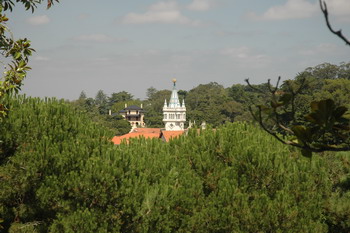
An elaborate tower seen through the foliage
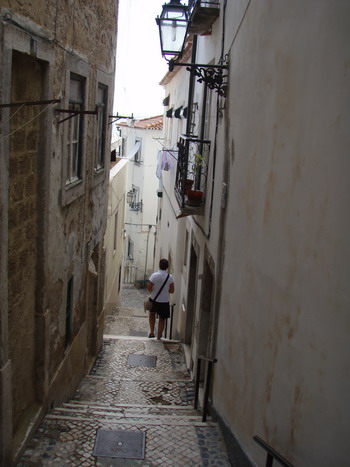
Walking down the steep narrow streets back to the waterfront.
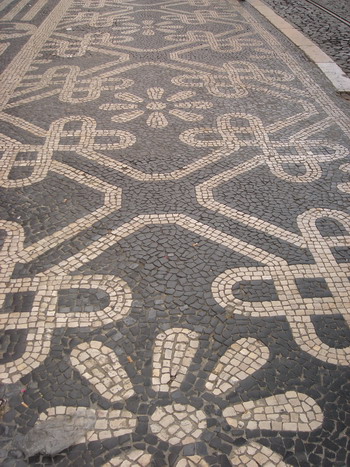
Another elaborately cobbled sidewalk.

Jim sitting at the cafe where we lunched. Note the triangles carved in the granite stones on the building behind him.
Lisbon was nearly destroyed in 1755 when a major earthquake and tidal wave killed 1/3 of the population and ruined the city. One section, the Baixa, was rebuilt as a planned quarter, with straight streets that are parallel to each other. The Alfame section (built more on bedrock) was not destroyed and the narrow streets, winding in a maze, are much as they were in the 18th century.
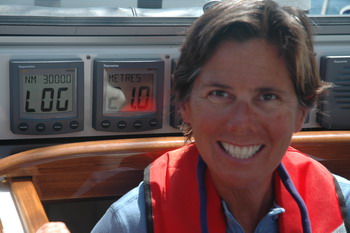
Tenaya has now traveled 3000 nautical miles!